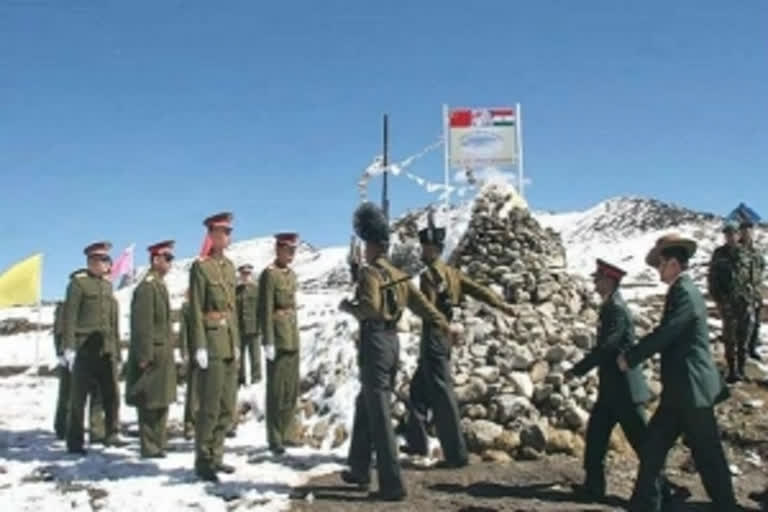New Delhi: Just after the brutal and unprecedented violence that rocked the steep rocky heights of the Galwan river gorge on Monday night, Major-General ranked officers of the Indian Army and the Chinese PLA at the divisional commander level met for three consecutive days in “emergency mode”, but this process of talks may have ended on Thursday after "certain immediate issues" had been addressed, multiple sources told ETV Bharat.
The "immediate issues" are understood to be linked with the savage violence unleashed by the PLA on outnumbered Indian soldiers who were carrying weapons that fateful night but did not fire when PLA soldiers bludgeoned them with stud-spiked maces and other crude weapons.
“Today morning talks began at 10:30 AM but nothing has been decided on the continuation of talks at the divisional commander level. In fact, there may not be any more military talks,” one of the sources pointed out.
The military talks were part of a de-escalatory process of negotiations to ease off ongoing standoffs between the two armies in several points near the LAC.
Read: China says it agreed to a 'cooling down' at border
The standoffs have been marked by physical brawls from Ladakh’s Pangong lake on May 4-5 to north Sikkim on May 10 although the most violent one has been the Monday night fight at Galwan Valley.
The meetings at Galwan Valley were held at Patrol Point 14 (PP 14), the same point where the fateful fight had taken place on Monday.
PP 14 offers a commanding view of the surroundings and is of strong military interest to both the Indian Army and PLA.
After a steep fall below flows the Galwan river. Many soldiers are believed to have fallen into the mountain river during the fight where reportedly guns were not used.
“Not using guns and obeying orders till the very end speaks volumes of the kind of training the Indian soldiers receive,” he added.
Protocol and convention lay down say that the Indian Army and the PLA will not fire at each other along the Line of Actual Control (LAC). In fact, many of the troops on either side do not carry weapons till 2 km of the LAC while patrolling and on occasions when they do, the gun barrels are slanted downwards.
Read:India should explore non-military options to hurt China
As many as 20 Indian Army soldiers, including the commanding officer—Colonel B Santosh Babu who himself was part of most delegations of the earlier ongoing military talks with the PLA—died in the incident while scores are believed to have been injured, some even critically. PLA casualties are not known.
Meanwhile, deployments on both sides are continuing to the frontlines or to proximate positions behind the frontline.
The Indian government has also asked the India-China border specialist force, the ITBP, to be on high alert and keep an eye on any Chinese activity across the border.
Interestingly, the ITBP—mandated with guarding the India-China border from Ladakh to Arunachal Pradesh, with the SSB guarding the India-Nepal border in between—had taken a back seat on border deployment in April with the Army taking over.
It is to be noted that in normal circumstances, ITBP teams operate jointly with the Army.
Also Read: India, China armies’ brawl at Galwan takes deadly turn, at least 20 Indian soldiers dead



